Nekoashi-dachi is one of the signature stances of the Goju Kai karate style, and was in fact created by its founder Gogen "The Cat" Yamaguchi.
Anyone who's ever seen a movie with Ninjas in it will immediately recognise this stance. It's the classical stalking posture used by movie-Ninjas to sneak up on their prey. In reality, that's not one of its prime functions. The great strength of Nekoashi-dachiis the instant availability of the front foot for kicking. As such, this stance is ideal for holding opponents at bay, especially if you have fast legs, or they have long arms. For this reason, this stance particularly suits karateka who are good with their legs.
However, in a lot of kata, Nekoashi-dachi is used to indicate treading on an opponent's foot to prevent them escaping, with the raised heel demonstrating that the full weight is being applied to the opponent.
Another use for this stance is to protect the testicles from a rising kick. Although it offers little protection against a thrusting kick to most of us, some fighters allow the testicles to drop back between the thighs, which then close to provide a shield of muscle.
Technique:
| # | Description |
|---|---|
| 1. | The most important part of this stance, is the fact that the vast majority of your weight is supported by your back leg, and as such, it is developing leg strength. The front leg is purely there as an aid to balance. When teaching this technique, many senseis will sweep the front leg to ensure that it is barely supporting weight. If the student loses balance when the front leg is swept, then was too much weight on it. You should be able to lift the front foot from the ground with no additional change in posture or balance. |
| 2. | The back foot faces outwards at an angle of 45 degrees, whilst the front foot faces forwards. The front foot is positioned about one-and-a-half of your foot-lengths forward of the back foot. The unusual feature of this stance is the fact that the heel of the front foot is raised from the ground, placing what tiny amount of weight exists, on the ball of the foot. This provides tension in both the quadriceps (the front of the thigh) and calf muscles of the lead leg, enabling you to initiate a kick more quickly. |
| 3. | This stance can be used with the hips facing forwards or at an angle of 45 degrees. You can also turn your shoulders so that you are facing at a right angle to the direction of your stance, looking across your rear leg. |
| 4. | The version with a 45 degree hip offset, is best-used for situations when your body rotation and block movement are in opposite directions. For example, when performing an Inside Shuto with your right hand, whilst turning your body anti-clockwise. |
Common mistakes to avoid:
- Don't make the stance too short.
- Don't stick your butt out.
- Don't lean forwards.
- Lift your front heel up high.
- Tuck your back knee in behind your front one - it should not stick out at 45 degrees.
- Don't stand up tall.
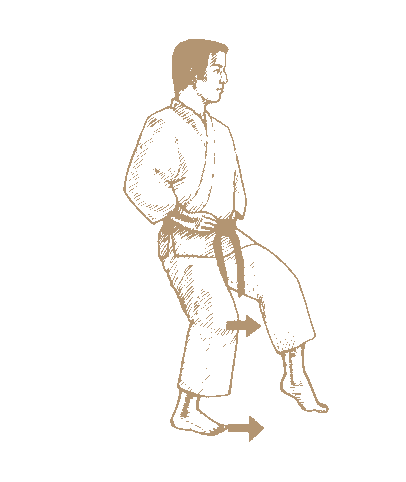
Attitude of cat's paws (cat's attitude) nekoashi-dachi. Knee slightly bent, second leg only the front foot of the foot touches the ground.
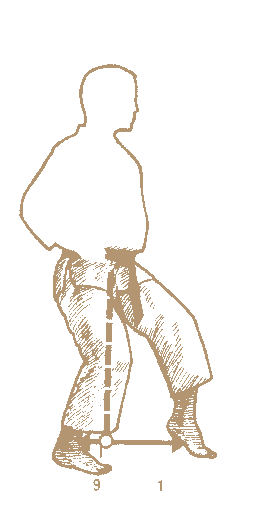
Weight distribution in leg posture should be 90% to 10%.
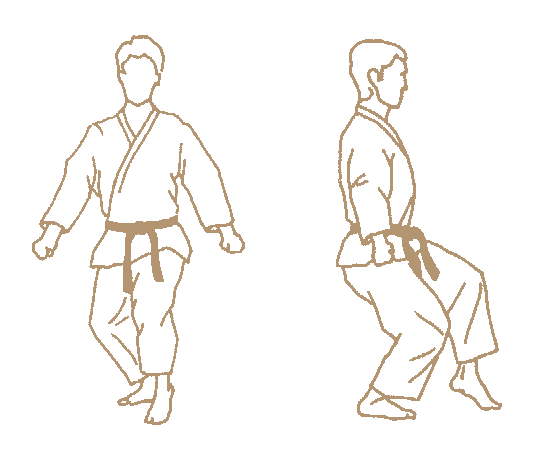
View of the nekoashi-dachi posture.
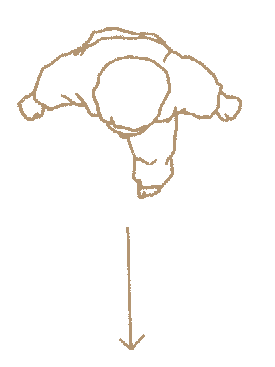
Top view of the nekoashi-dachi posture.
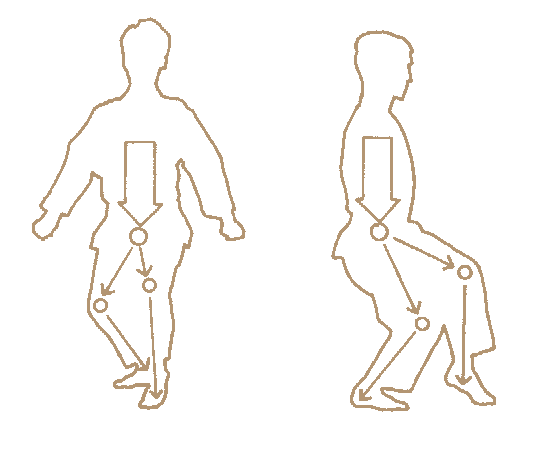
Distribution of gravitational forces in the nekoashi-roof attitude.
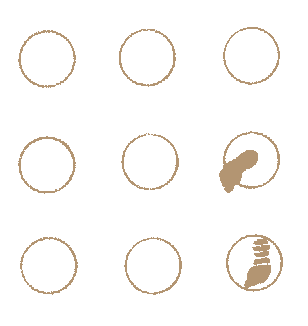
Putting feet in nekoashi-dachi in an exercise on stumps.






